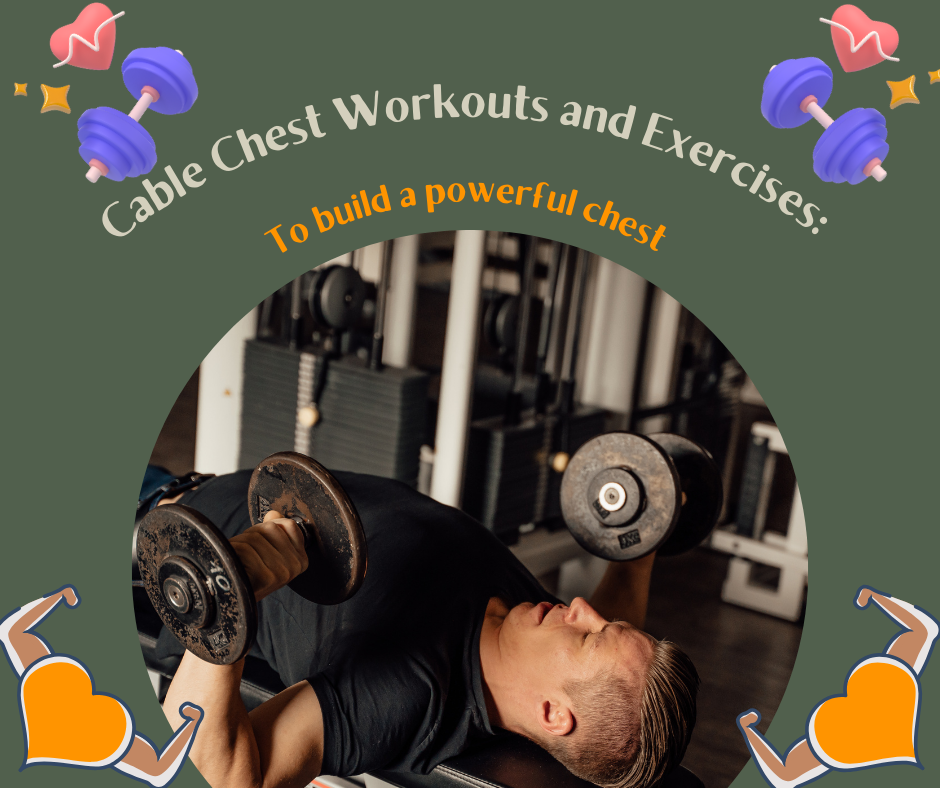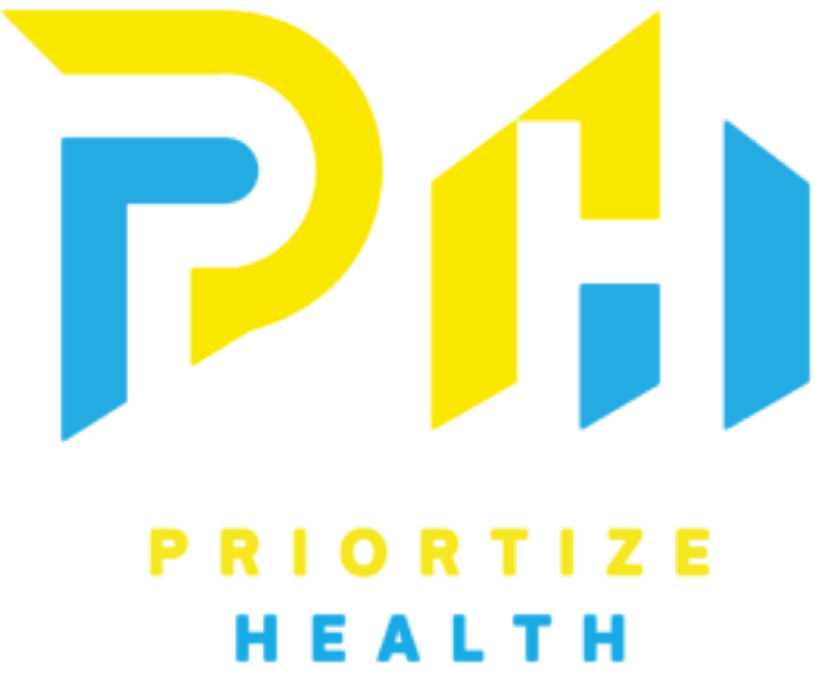
Cable Chest Workouts and Exercises: To build a powerful chest
A well-defined chest is a symbol of strength and fitness. The cable chest workouts are an excellent way to target your pectoral muscles in an effective manner. There are various cable chest exercises and workouts that will help you achieve the chest of your dreams. The following step-by-step instructions will help to ensure that you maximize your results.
The Benefits of Cable Chest Workouts
Cable chest workouts offer several benefits. It makes them a valuable addition to any fitness routine:
- Isolation and Versatility: Cable machines allow for precise isolation of the chest muscles. This ensures that you target the pectorals in an effective manner. They offer a wide range of exercise variations. This makes it easier to work on different aspects of your chest. It can be from upper to lower pectorals.
- Constant Tension: Free weights rely on gravity and can lose tension during certain phases of an exercise. But cable machines provide constant tension throughout the entire range of motion. This consistent resistance helps to stimulate muscle growth and strength in an effective manner.
- Reduced Risk of Injury: Cable machines provide a controlled environment for chest workouts. This reduces the risk of injury associated with lifting heavy weights without proper form. They are particularly useful for beginners or those recovering from chest injuries.
- Improved Muscle Engagement: The stability offered by cables encourages better muscle engagement. It also minimizes the involvement of secondary muscles. This ensures that you’re targeting your chest muscles during workouts. Thus, it can provide better efficient results.
- Variation and Progression: Cable chest workouts allow for a wide variety of exercises. They vary from flyes to presses, with different grip options. This variety helps to keep your workouts interesting. It provides room for progression as you increase the weight or change your technique.
- Functional Strength: Cable chest exercises can also enhance your functional strength. It translates into improved performance in daily activities and sports. They help you build a strong and stable chest, which is vital for pushing and lifting motions.
- Enhanced Mind-Muscle Connection: Performing these exercises often requires more concentration and control. It leads to a better mind-muscle connection. This increased awareness of muscle engagement can contribute to better results.
Chest Cable Exercises for Beginners
Cable chest exercises are a great way to introduce newcomers to the world of strength training and chest development. These exercises are generally safe, easy to learn, and effective for building a foundation of chest strength. Here are some cable chest exercises suitable for beginners:
1. Cable Chest Press:
- Setup: Attach a handle to the lower pulley of a cable machine. Sit on a bench, grasp the handle with both hands, and bring it to chest height.
- Execution: Push the handle forward so that your arms stay extended. The next step is to return to the starting position.
- Key Points: Keep your back against the bench, maintain a neutral spine. Focus on a controlled and smooth motion.
2. Cable Flyes:
- Setup: Attach two D-handles to the high pulleys on a cable machine. Stand in the middle, grasp a handle in each hand, and step forward to create tension in the cables.
- Execution: Start with your hands close together in front of your chest. Open your arms wide, squeezing your chest muscles as you bring your hands together.
- Key Points: Keep a slight bend in your elbows, and focus on feeling the stretch and contraction in your chest.
3. Incline Cable Press:
- Setup: Use an incline bench and attach a handle to the lower pulley of a cable machine. Sit on the bench and grab the handle.
- Execution: Press the handle upward, extending your arms. You should also maintain control and a steady tempo.
- Key Points: Ensure a comfortable and secure position on the bench. Concentrate on engaging your upper chest.
4. Standing Cable Pulldown:
- Setup: Attach a straight bar to the high pulley. Stand facing the cable machine, grasp the bar with both hands, and kneel down on one knee.
- Execution: Pull the bar down to chest level while keeping your elbows close to your body. In the next step return to the starting position.
- Key Points: Maintain proper posture and focus on pulling with your chest muscles, not your arms.
5. Low-to-High Cable Crossover:
- Setup: Attach two D-handles to the low pulleys on a cable machine. Stand in the middle, grasp a handle in each hand, and step back to create tension in the cables.
- Execution: Start with your hands low and behind your body. Bring them up and together, crossing at chest level.
- Key Points: Keep a slight bend in your elbows and concentrate on the squeeze at the top of the movement.
These exercises will help you develop a solid foundation of chest strength and muscle engagement. Remember to start with a light weight to focus on proper form. Increase the resistance as you become more comfortable with these movements. Always focus on safety and control in your workouts.
Cable Chest Exercises for Intermediate and Advanced Levels
Intermediate and advanced individuals look to take their chest development to the next level. These exercises provide greater resistance and target the chest muscles from various angles. Here are some cable chest exercises suitable for intermediate and advanced levels:
Intermediate Cable Chest Exercises:
- Single-Arm Cable Press:
- Setup: Use a single-hand attachment on a cable machine. Stand facing away from the machine with your back foot forward and grab the handle with one hand.
- Execution: Press the handle forward, extending your arm. This exercise challenges stability and isolates one side of the chest at a time.
2. High-to-Low Cable Crossover:
- Setup: Attach two D-handles to the high pulleys on a cable machine. Stand in the middle, grasp a handle in each hand, and step forward to create tension.
- Execution: Start with your hands high and in front of your body. Bring them down and together, crossing at chest level. This targets the lower chest in an effective manner.
3. Cable Push-Up:
- Setup: Attach handles to the low pulleys on a cable machine and set up a bench parallel to the machine. Place your hands on the handles in a push-up position.
- Execution: Perform push-ups by lowering your chest between the handles. Now push them up to the starting position. The cables provide added resistance.
Advanced Cable Chest Exercises:
- Cable Decline Press:
- Setup: Use a decline bench and attach a handle to the lower pulley of a cable machine. Lie on the bench, grasp the handle, and position it above your chest.
- Execution: Press the handle upward, extending your arms. This exercise targets the lower chest.
2. Incline Single-Arm Cable Flyes:
- Setup: Use an incline bench and a single-hand attachment on the cable machine. Lie on the bench, hold the handle in one hand, and extend your arm over the bench.
- Execution: Open your arm wide to the side, then bring it back to the starting position. This exercise isolates the upper chest and challenges stability.
3. Cable Chest Pullover:
- Setup: Attach a straight bar to the high pulley. Lie on a bench so your upper back is on the bench, and your hips and legs are hanging off. Hold the bar with both hands.
- Execution: Lower the bar backward, keeping a slight bend in your elbows, and then bring it back over your chest. This exercise stretches and works the chest muscles.
4. Cable Chest Finisher:
- Setup: Use a single-hand attachment on a cable machine. Set the cable to chest height.
- Execution: Perform cable flyes with a strong focus on slow, controlled, and intense repetitions. We can use this exercise to finish a chest workout with a burnout set.
Creating Effective Cable Chest Workouts
Creating an effective cable chest workout involves careful planning and a structured approach. A well-thought-out routine can help you maximize your chest gains. Here’s how to create an effective cable chest workout:
1. Set Clear Goals: Before designing your cable chest workout, determine your fitness goals. Do you want to build muscle size, increase strength, or enhance chest endurance? Your goals will influence the exercises and rep schemes you choose.
2. Exercise Selection: Select exercises that target different aspects of your chest. Mix compound movements (those that involve different muscle groups) with isolation exercises (those that focus on the chest). Include a combination of upper, lower, and mid-chest exercises for balanced development.
Example Exercises:
- Cable Chest Press
- Cable Flyes
- Incline Cable Press
- Cable Crossovers
- Single-Arm Cable Press
3. Workout Structure: Organize your cable chest workout into a structured routine. You can split your chest workouts throughout the week. The other option is to combine them with other muscle groups. Here are two common approaches:
a. Push-Pull Split: –
Day 1: Chest and Triceps – Day 2: Rest – Day 3: Back and Biceps – Day 4: Rest – Day 5: Shoulders and Legs – Day 6: Rest – Day 7: Rest
b. Full-Body Split: –
Day 1: Full-Body Workout – Day 2: Rest – Day 3: Full-Body Workout – Day 4: Rest – Day 5: Full-Body Workout – Day 6: Rest – Day 7: Rest
4. Repetitions and Sets: Adjust your rep and set ranges based on your goals:
- For muscle size (hypertrophy): Aim for 3-4 sets of 8-12 repetitions with moderate to heavy weights.
- For strength: Perform 3-5 sets of 4-6 repetitions with heavier weights.
- For endurance: Do 2-3 sets of 12-15+ repetitions with lighter weights.
5. Rest Periods: Rest between sets is crucial. For strength and muscle size, take longer rest periods (1-2 minutes). At the same time for endurance, keep the rest shorter (30 seconds to 1 minute).
6. Warm-Up: Always start your workout with a proper warm-up to prevent injuries. Perform light cardio and dynamic stretches. Start with a few sets of lighter cable chest exercises.
7. Progression: To ensure continuous improvement, increase the weight or resistance. You will feel comfortable with your current routine. Progressive overload is key to building muscle and strength.
8. Form and Control: Emphasize proper form and control throughout your workout. Maintain a steady tempo, avoid using momentum, and focus on the mind-muscle connection.
9. Cool Down: Finish your cable chest workout with stretching and static stretches. This will help to improve flexibility and reduce post-workout muscle soreness.
10. Recovery: Allow enough time for muscle recovery. Avoid working the same muscle groups on consecutive days. Take adequate sleep and nutrition to support muscle growth.
Sample Cable Chest Workout:
Here’s an example of an effective cable chest workout for muscle size (hypertrophy):
- Cable Chest Press: 4 sets x 10 reps
- Incline Cable Press: 3 sets x 8 reps
- Cable Flyes: 3 sets x 12 reps
- High-to-Low Cable Crossover: 3 sets x 10 reps
- Single-Arm Cable Press: 3 sets x 10 reps per arm
An effective workout is one that aligns with your goals, is consistent, and is enjoyable. Adjust your routine as needed based on your progress and preferences. Consult a fitness professional if you need personalized guidance.
Chest Cable Workouts for Strength and Endurance
Cable chest workouts can help to focus on both strength and endurance. To develop a well-rounded chest, incorporating exercises that target these aspects is crucial. Here’s a sample cable chest workout that combines strength and endurance training:
Strength and Endurance Cable Chest Workout:
Warm-Up:
- Start with 5-10 minutes of light cardio to increase blood flow and prepare your muscles.
- Perform dynamic stretches for the chest, shoulders, and arms to prevent injury.
- Do a couple of sets of push-ups or bodyweight chest exercises to activate your chest muscles.
Strength Phase:
Cable Chest Press (Strength Focus):
- 4 sets x 6-8 repetitions
- Use a heavy weight that challenges your strength.
- Rest for 2-3 minutes between sets.
Incline Cable Press (Strength Focus):
- 3 sets x 6-8 repetitions
- Focus on maintaining proper form and control.
- Rest for 2-3 minutes between sets.
Single-Arm Cable Press (Strength Focus):
- 3 sets x 6-8 repetitions per arm
- Lift a challenging weight for single-arm presses.
- Rest for 2-3 minutes between sets.
Endurance Phase:
- Cable Flyes (Endurance Focus):
- 3 sets x 12-15 repetitions
- Use a moderate weight and focus on maintaining good form throughout the sets.
- Rest for 1-2 minutes between sets.
- Cable Chest Pullover (Endurance Focus):
- 3 sets x 12-15 repetitions
- Maintain a steady tempo and control the movement.
- Rest for 1-2 minutes between sets.
- High-to-Low Cable Crossover (Endurance Focus):
- 3 sets x 12-15 repetitions
- Keep the weight moderate and concentrate on the mind-muscle connection.
- Rest for 1-2 minutes between sets.
Cool Down:
- After completing the workout, perform static stretches. They should be for the chest, shoulders, and arms to aid in muscle recovery.
The Importance of Proper Form in Cable Chest Workouts
1. Safety:
- Proper form minimizes the risk of injury. You should execute cable chest exercises with good form. It will reduce the likelihood of strains, sprains, and muscle imbalances.
- Using incorrect form can strain ligaments, tendons, and joints. It can also lead to overuse injuries, which can be painful and need extended recovery periods.
2. Muscle Engagement:
- Proper form ensures that the targeted chest muscles engage in full capacity during the exercise. This maximizes the effectiveness of your workout, promoting muscle growth and strength development.
- Incorrect form can shift the load to other muscle groups. It reduces the stimulus on your chest and limiting the results you can achieve.
3. Range of Motion:
- Maintaining proper form allows you to go through the full range of motion. This is essential for muscle development. Full range of motion exercises promote flexibility and functional strength.
- Incorrect form can restrict your range of motion. It can limit the muscle’s stretch and contraction, which can hinder progress.
4. Joint Health:
- Correct form helps protect your joints from unnecessary stress and wear. It ensures that is proper distribution of the force generated during the exercise. This reduces the risk of joint pain or damage.
- Poor form can place excessive stress on joints, leading to long-term joint problems.
5. Posture and Spinal Health:
- Maintaining proper form supports good posture, which is crucial for musculoskeletal health. Poor posture can lead to chronic back, neck, and shoulder pain.
- Incorrect form, such as arching the back or rounding the shoulders, can lead to postural issues over time.
6. Mind-Muscle Connection:
- Proper form enhances the mind-muscle connection, which is crucial for effective training. Feeling the muscle working and contracting during each repetition can lead to better results.
- Incorrect form can disconnect you from the muscle you’re targeting. This can also reduce the effectiveness of the exercise.
7. Performance Improvement:
- Use proper form in cable chest workouts on consistent basis. It allows you to progress and lift heavier weights in a safe manner. This, in turn, leads to strength gains and muscle growth.
- Incorrect form may limit your ability to increase resistance or progress. It will stall your progress.
8. Injury Prevention:
- Proper form minimizes the risk of acute injuries, such as muscle tears or joint sprains. Avoiding injuries is crucial for maintaining a consistent training routine.
- Using poor form can lead to acute injuries. This can side-line you from training and hinder your fitness journey.
Common Mistakes to Avoid in Chest Cable Workouts
Avoiding common mistakes in chest cable workouts is crucial. It will help to maximize the effectiveness of your exercises and reduce the risk of injury. Here are some common mistakes to watch out for:
- Using Too Much Weight:
Lifting heavy weights can compromise your form and increase the risk of injury. Use a weight that allows you to maintain proper form throughout the exercise.
- Poor Posture and Alignment:
Maintaining good posture and alignment is vital. Avoid rounding your shoulders or arching your back too much. Don’t allow your elbows to flare out during exercises.
- Neglecting Warm-Up:
Skipping a proper warm-up can increase the risk of muscle strains and injuries. Always warm up with light cardio and dynamic stretches before starting your cable chest workout.
- Neglecting the Full Range of Motion:
Failing to use the full range of motion hinders muscle engagement. Ensure that you stretch and contract your chest muscles during each repetition.
- Lack of Mind-Muscle Connection:
Failing to establish a mind-muscle connection can result in reduced muscle engagement. Concentrate on feeling your chest muscles working during each repetition for better results.
- Using Momentum:
Swinging or using momentum to lift the weight takes the focus off your chest muscles. Keep the movements controlled and avoid jerking the weight.
- Overarching or Overstretching:
Overarching your back or overstretching at the bottom of an exercise can place excessive stress on your lower back and shoulders. Maintain a natural arch and controlled range of motion.
- Excessive Speed:
Rushing through repetitions reduces the time under tension for your chest muscles. Aim for a controlled and steady tempo throughout your cable chest exercises.
- Ignoring the Eccentric Phase:
The eccentric (lowering) phase of an exercise is essential for muscle growth. Avoid dropping the weight too fast during this phase; instead, lower it under control.
- Incorrect Cable Settings:
Ensure that the cable machine is set up in correct manner for your exercise. The height and alignment of the cables should match the exercise you are performing.
- Inadequate Warm-Down and Stretching:
After your workout don’t neglect cool-down stretches. It can lead to muscle tightness and reduced flexibility. Take a few minutes to stretch your chest and shoulders.
- Failing to Breathe in Proper manner:
Holding your breath during an exercise can raise blood pressure. It can also reduce oxygen supply to your muscles. Deep breathe on regular basis during each repetition.
- Excessive Repetitions:
Performing excessive repetitions with a lighter weight may not be effective for building strength or size. Choose an appropriate rep range based on your goals.
- Not Seeking Guidance:
If you’re unsure about exercise technique or form, consider seeking guidance from a fitness professional or personal trainer. They will help to ensure that you’re performing cable chest exercises in a correct manner.
Expert Tips for Maximizing the Impact of Cable Chest Workouts
Maximizing the impact of your cable chest workouts involves performing the exercises and paying attention to various factors. It can enhance the effectiveness of your training. Here are some expert tips to help you get the most out of your cable chest workouts:
- Focus on Proper Form:
Always maintain correct form throughout your exercises. Focus on controlled movements and a full range of motion. Proper form ensures that you’re targeting your chest muscles in an effective manner.
- Mind-Muscle Connection:
Concentrate on feeling your chest muscles working during each repetition. This mind-muscle connection can lead to better muscle engagement and improved results.
- Vary Your Grip and Hand Placement:
Experiment with different grip styles and hand placements. This will help to target various parts of your chest. Wider grips emphasize the outer chest, while narrower grips can engage the inner chest.
- Use a Full Range of Motion:
Perform cable chest exercises through their entire range of motion. This ensures that you’re engaging your chest muscles in complete form and avoiding shortcuts that might limit results.
- Control the Eccentric Phase:
Pay attention to the lowering (eccentric) phase of each repetition. Lower the weight under control, which can lead to increased muscle damage and growth.
- Increase Resistance in gradual manner:
To build strength and muscle, increase the weight or resistance over time. This principle of progressive overload is essential for continued progress.
- Focus on Time Under Tension (TUT):
Manipulate the tempo of your repetitions to increase time under tension. Slower, controlled reps can lead to muscle hypertrophy.
- Mix Up Your Rep Ranges:
Periodize your workouts by varying your rep ranges. Incorporate phases of low reps (for strength) and high reps (for endurance). This will help to challenge your muscles in different ways.
- Include Compound and Isolation Exercises:
Balance your cable chest workouts with both compound exercises that engage many muscle groups (e.g., cable presses) and isolation exercises that target the chest directly (e.g., cable flyes).
- Avoid Overtraining:
Adequate rest is essential for muscle recovery and growth. Don’t overtrain your chest; allow time for recovery and muscle repair between workouts.
- Stay Consistent:
Consistency is key to achieving lasting results. Stick to a regular workout schedule. Make chest training a consistent part of your fitness routine.
- Stay Hydrated and Nourished:
Proper hydration and nutrition are essential for muscle function and recovery. Ensure you’re getting enough water and a balanced diet. It will help to support your fitness goals.
- Warm-Up and Cool Down:
Always start with a warm-up to prepare your muscles and finish with a cool-down to aid in recovery. Stretch your chest, shoulders, and upper back after your workout.
- Track Your Progress:
Keep a workout journal to track your exercises, weights, and repetitions. This helps you to check your progress and adjust your training as needed.
- Consider Professional Guidance:
If you’re new to cable chest workouts or looking to fine-tune your form, consider working with a personal trainer or fitness expert. They can provide personalized guidance and feedback.
The Future of Chest Cable Workouts
The future of chest cable workouts is likely to involve innovations in equipment, technology, and exercise techniques. It will continue to enhance the effectiveness and convenience of the workouts. Here are some potential developments in the future of cable chest workouts:
- Smart Cable Machines: Today there are many advancements in fitness technology. So, cable machines may become smarter and more interactive. They could include features like built-in cameras and sensors. It will provide real-time feedback on form and performance. Virtual trainers or AI-powered coaches might guide users through workouts, offering personalized recommendations.
- Biometric Tracking: Future cable machines may incorporate biometric tracking capabilities. For example, heart rate monitoring and muscle activity sensors. We can use this data to tailor workouts to an individual’s needs and goals. It will help to optimize training programs for better results.
- Virtual Reality (VR) and Augmented Reality (AR): VR and AR technologies can transform cable chest workouts. This is possible by immersing users in virtual environments that make exercise more engaging. Virtual environments can simulate real-world challenges, providing functional fitness benefits.
- Customizable Cable Attachments: Innovative cable attachment designs will allow users to customize the grip and angles of their cable exercises in efficient manner. These attachments will provide a more ergonomic and comfortable workout experience.
- Resistance Control: Future cable machines may feature automated resistance control. It allows users to adjust the weight in digital form. This can provide precise progressive overload and adaptation to an individual’s strength level.
- Holographic Training Partners: Holographic or projected training partners may assist users with form, motivation, and guidance during workouts. These holographic trainers could adjust their advice based on real-time performance.
- Space-Saving Designs: Space-saving cable machines are more compact and adaptable for home use. It will become popular, allowing individuals to create functional home gyms.
- Sustainable Materials: There is a growing environmental awareness today all over the world. So, the future of cable machines may incorporate sustainable materials and energy-efficient designs. This will help to reduce the carbon footprint of manufacturing and usage.
- Real-Time Data Analysis: Cable machines could offer real-time data analysis. It shows the users their muscle activation patterns, power output, and more providing insights for optimization.
- Integration with Wearable Tech: Cable machines may integrate with wearable technology, syncing data from devices like smartwatches and fitness trackers. It will help to watch and adjust workouts in real time.
- Community and Social Features: Future cable machine interfaces might include social networking elements. This will allow users to connect with others for motivation, challenges, and accountability.
- Nutritional and Recovery Integration: Cable machines might offer guidance on post-workout nutrition and recovery strategies. It will create a more holistic approach to fitness and health.
- Artificial Intelligence and Machine Learning: We can use AI could to analyze a user’s performance over time. They can also adapt workouts, and provide insights into training progress and areas for improvement.
FAQ’s:
Ans: Yes, you can build your chest muscles using cable exercises. Cable machines provide constant tension throughout the range of motion. This can help stimulate muscle growth. Some effective cable exercises for chest development include cable flyes, cable crossovers, and cable chest presses. Make sure to use proper form and increase the weight or resistance to continue making gains.
Ans: To train your chest with cables, follow these steps:
1. Set up the cable machine with the appropriate weight.
2. Choose the attachment (e.g., handles, rope) that suits your exercise.
3. Stand or sit in the proper position, ensuring a stable stance.
4. Perform exercises like cable flyes, cable crossovers, or cable chest presses.
5. Focus on squeezing your chest muscles at the peak of each repetition.
6. Control the movement, maintaining good form throughout.
7. Gradually increase resistance and reps as your strength improves.
Remember to warm up and use proper technique. You should include cable exercises in your chest workout routine for balanced muscle development.
Ans: The “chest line” typically refers to the definition and separation between the pectoral muscles. To enhance this, focus on exercises like cable crossovers, cable flyes, and incline bench presses. These movements target the upper and inner chest areas. It contributes to a more defined chest line. Maintain a well-balanced diet and lower body fat. This can also help highlight your chest muscles’ definition.






4 Comments
I loved it as much as you’ll end it here. The sketch and writing are good, but you’re nervous about what comes next. Definitely come back because it’s pretty much always the same if you protect this walk.
Wow superb blog layout How long have you been blogging for you make blogging look easy The overall look of your site is magnificent as well as the content
Thanks I have just been looking for information about this subject for a long time and yours is the best Ive discovered till now However what in regards to the bottom line Are you certain in regards to the supply
[…] for targeting the chest muscles. They engage the pectoralis major, the primary muscle of the chest, along with the anterior deltoids and triceps. Push-ups provide a challenging bodyweight […]